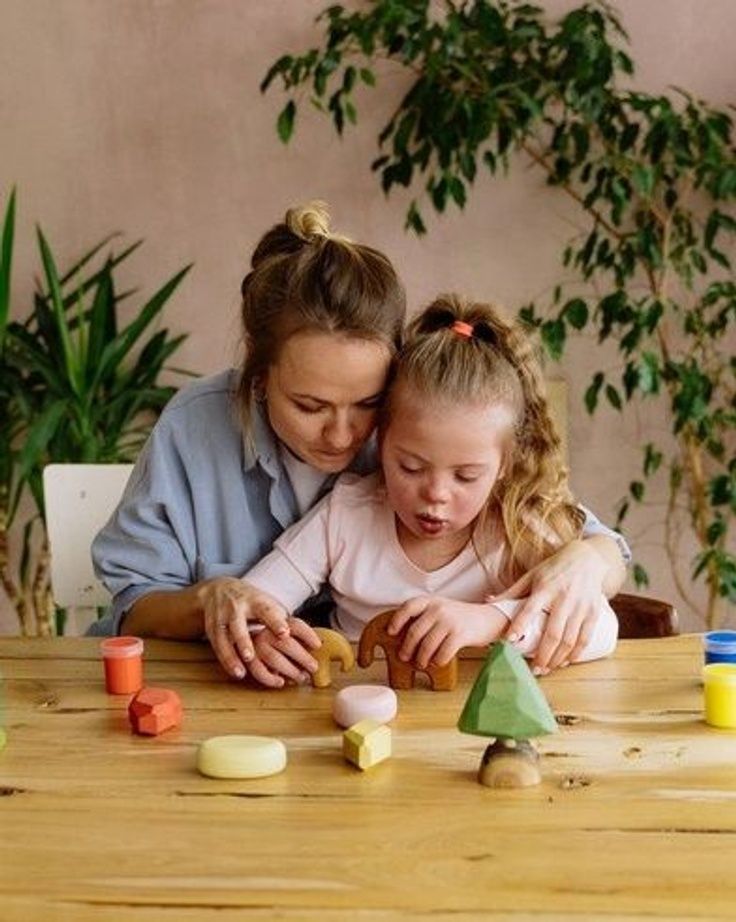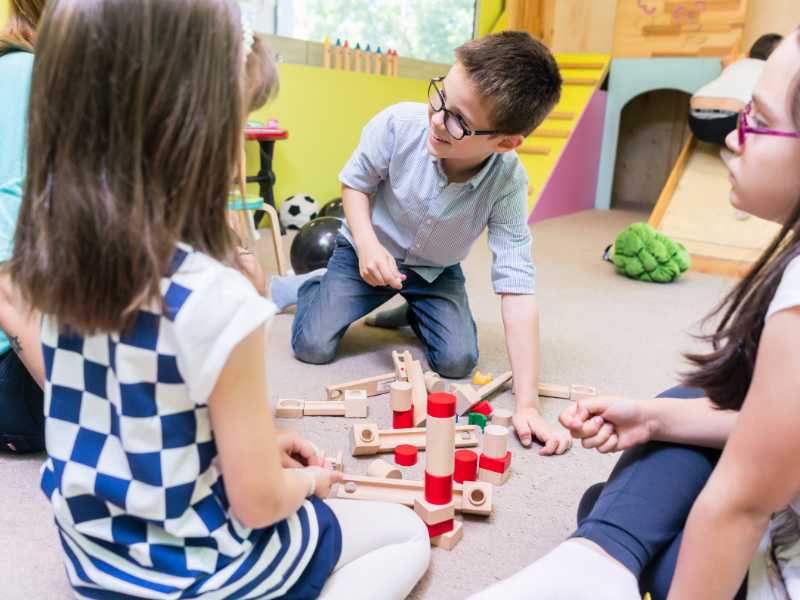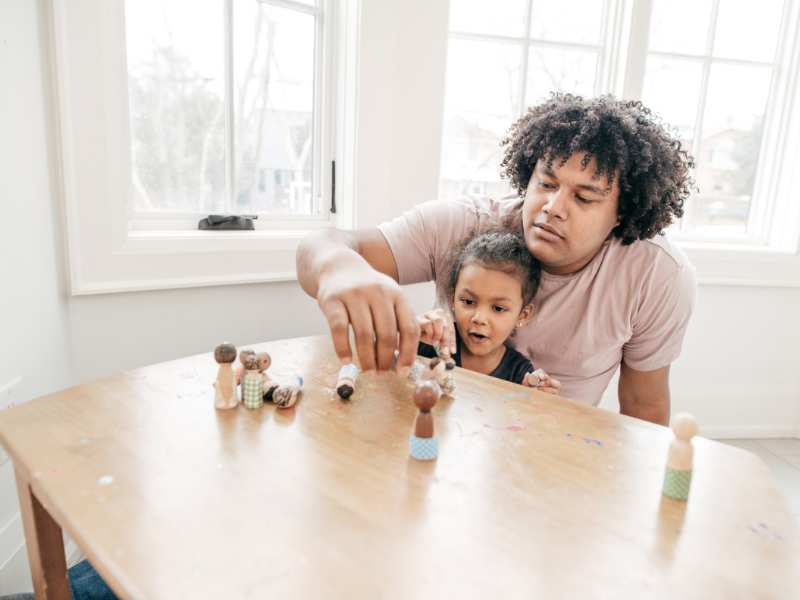This post will walk you through the 10 ways to discipline and care for a special child you can adopt as a parent or caregiver.
Parenting a special child comes with its own set of unique challenges and rewards.
Each child is a world unto themselves, and when a child has special needs, the journey of parenting becomes even more intricate.
Balancing discipline and care requires a nuanced approach that honors the child’s individuality while nurturing their growth and development.
In this post, let us look at the thoughtful strategies and practices designed to support and guide special children in a manner that respects their unique needs and helps them thrive.
By comprehending and implementing effective approaches, parents and caregivers can create a nurturing environment that promotes positive behavior and emotional well-being.
10 WAYS TO DISCIPLINE AND CARE FOR A SPECIAL CHILD
1. Establish Clear and Consistent Expectations
 Consistency is crucial for special children as it provides a sense of security and predictability.
Consistency is crucial for special children as it provides a sense of security and predictability.
When rules and expectations are clear and consistently enforced, children are more likely to understand what is expected of them.
This helps in reducing anxiety and confusion. For example, if bedtime is at 8 PM every night, maintaining this routine helps the child know what to expect and when, making transitions smoother.
2. Use Positive Reinforcement
 Positive reinforcement involves rewarding desired behaviors to encourage their repetition.
Positive reinforcement involves rewarding desired behaviors to encourage their repetition.
This can be done through praise, stickers, extra playtime, or any other reward that the child values.
Positive reinforcement is more effective than punishment because it focuses on encouraging good behavior rather than just discouraging bad behavior.
For instance, if a child completes their homework on time, praising them or giving them a small treat can motivate them to continue doing so.
3. Create a Structured Routine
 A structured routine provides a predictable environment, which is particularly beneficial for special children.
A structured routine provides a predictable environment, which is particularly beneficial for special children.
Knowing what to expect and when can reduce anxiety and help them feel more in control.
A daily schedule that includes times for waking up, meals, play, learning, and bedtime can help the child navigate their day with more confidence.
Visual schedules or charts can be especially helpful in establishing and maintaining these routines, use of visual charts and schedules is one of the best ways to discipline and care for a special child.
4. Incorporate Visual Aids

Visual aids can include charts, pictures, or schedules that visually represent tasks, routines, or rules.
These aids are particularly useful for children with special needs as they provide clear and consistent cues about what is expected.
For example, a morning routine chart with pictures of brushing teeth, getting dressed, and eating breakfast can help a child understand and follow their morning activities without confusion.
5. Be Patient and Flexible
 Special children may need more time to understand instructions, adapt to changes, or calm down when upset.
Special children may need more time to understand instructions, adapt to changes, or calm down when upset.
Patience is essential in allowing them the time they need without pressure. Flexibility in your approach means being open to adjusting strategies based on the child’s responses and needs.
For example, if a child is struggling with a particular task, being patient and trying different methods or giving them a break can make a significant difference.
6. Use Clear and Simple Language
 Clear and simple language helps in making instructions and expectations easily understandable for special children.
Clear and simple language helps in making instructions and expectations easily understandable for special children.
Avoid using complex sentences or abstract concepts. Be direct and concise.
For example, instead of saying, “It’s time to tidy up and put all your toys away because it’s almost dinner time,” you might say, “Please put your toys in the box now.” This makes it easier for the child to process and follow the instructions.
7. Provide Emotional Support
 Emotional support involves being attuned to the child’s feelings and providing comfort and reassurance.
Emotional support involves being attuned to the child’s feelings and providing comfort and reassurance.
This can include acknowledging their feelings, offering hugs, or simply being present.
For example, if a child is frustrated because they can’t complete a task, acknowledging their frustration and offering help or a break can help them feel understood and supported.
8. Set Realistic Goals
 Setting realistic and achievable goals helps in building the child’s confidence and sense of accomplishment.
Setting realistic and achievable goals helps in building the child’s confidence and sense of accomplishment.
Break down larger tasks into smaller, manageable steps that the child can achieve.
For instance, if the goal is to improve reading skills, starting with short, simple books and gradually increasing difficulty can help the child experience success and build their skills progressively.
9. Collaborate with Professionals
 Working with teachers, therapists, and other professionals can provide additional insights and strategies tailored to the child’s needs.
Working with teachers, therapists, and other professionals can provide additional insights and strategies tailored to the child’s needs.
These professionals can offer valuable guidance and support that complements your efforts at home.
Regular communication and collaboration ensure that everyone involved in the child’s care is on the same page and working towards common goals.
10. Foster a Positive Environment
 Creating a positive and nurturing environment involves focusing on the child’s strengths and celebrating their successes.
Creating a positive and nurturing environment involves focusing on the child’s strengths and celebrating their successes.
This can boost their self-esteem and motivation. For example, displaying their artwork, praising their efforts, and creating opportunities for them to succeed can make them feel valued and encouraged to keep trying.
HOW TO CREATE A SUPPORTIVE ENVIRONMENT
1. Understand and Respect Their Needs
 Personalized Approach: Every child is unique, and this is especially true for children with special needs.
Personalized Approach: Every child is unique, and this is especially true for children with special needs.
Take the time to understand their specific needs, preferences, and triggers.
This understanding will help you tailor your approach to suit them best.
Respect Their Pace: Allow them to progress at their own pace and celebrate small achievements.
2. Provide Structure and Consistency
 Daily Routines: Establish predictable daily routines that give your child a sense of security.
Daily Routines: Establish predictable daily routines that give your child a sense of security.
This can include set times for waking up, meals, play, learning, and bedtime.
Visual Schedules: Use visual aids such as charts or picture schedules to help your child understand and anticipate daily activities.
3. Create a Safe and Accessible Physical Environment
 Safety First: Ensure that your home is safe and free from potential hazards. Childproof areas where necessary.
Safety First: Ensure that your home is safe and free from potential hazards. Childproof areas where necessary.
Accessibility: Make sure that the child’s environment is easily navigable.
This could mean having furniture and items at their height or using adaptive equipment to assist with mobility or daily tasks.
4. Foster Positive Relationships
 Family Support: Encourage positive interactions with family members. Siblings and extended family can play a crucial role in providing emotional support.
Family Support: Encourage positive interactions with family members. Siblings and extended family can play a crucial role in providing emotional support.
Social Opportunities: Arrange playdates or social activities with peers to help your child build friendships and social skills.
5. Encourage Independence
 Empower Them: Encourage your child to do things on their own as much as possible. This can build their confidence and independence.
Empower Them: Encourage your child to do things on their own as much as possible. This can build their confidence and independence.
Adapt Tasks: Break down tasks into smaller, manageable steps and provide assistance only when necessary.
6. Use Positive Reinforcement
 Praise and Rewards: Focus on praising good behavior and achievements.
Praise and Rewards: Focus on praising good behavior and achievements.
Use rewards that are meaningful to your child, such as stickers, extra playtime, or a favorite activity.
Consistent Feedback: Provide consistent and immediate feedback to reinforce positive behavior, use of rewards and praise are creative ways to discipline and care for a special child.
7. Support Emotional Well-being
 Emotional Validation: Acknowledge and validate your child’s feelings. Let them know it’s okay to feel upset or frustrated.
Emotional Validation: Acknowledge and validate your child’s feelings. Let them know it’s okay to feel upset or frustrated.
Calming Strategies: Teach and practice calming strategies, such as deep breathing, to help your child manage their emotions.
8. Engage in Meaningful Activities
 Interest-Based Activities: Engage your child in activities that they enjoy and are interested in.
Interest-Based Activities: Engage your child in activities that they enjoy and are interested in.
This can include hobbies, sports, or creative pursuits.
Learning Opportunities: Incorporate learning opportunities into everyday activities. For example, cooking together can teach math and science concepts.
9. Collaborate with Professionals
 Therapists and Educators: Work closely with therapists, teachers, and other professionals involved in your child’s care.
Therapists and Educators: Work closely with therapists, teachers, and other professionals involved in your child’s care.
Regular communication and collaboration ensure a consistent approach to supporting your child.
Parent Support Groups: Join support groups where you can share experiences and strategies with other parents of special children.
10. Take Care of Yourself
 Self-Care: Ensure you take time for your well-being.
Self-Care: Ensure you take time for your well-being.
Parenting a special child can be demanding, and taking care of yourself ensures you can be there for your child.
Seek Support: Don’t hesitate to seek help from family, friends, or professional counsellors when needed.
HOW TO HANDLE MELTDOWNS OR CHALLENGING BEHAVIOURS
1. Stay Calm
 Remain Composed: Your calm demeanor can help de-escalate the situation.
Remain Composed: Your calm demeanor can help de-escalate the situation.
Take deep breaths and maintain a steady, soothing voice.
Model Calmness: Demonstrating calm behavior shows your child how to handle stress.
2. Identify Triggers
 Observe Patterns: Pay attention to what precedes meltdowns or challenging behaviors.
Observe Patterns: Pay attention to what precedes meltdowns or challenging behaviors.
Common triggers might include sensory overload, changes in routine, or frustration from not being able to communicate needs.
Keep a Journal: Documenting incidents can help identify patterns and triggers over time and its one of the most efficient ways that can help know when to discipline and care for a special child.
3. Create a Safe Space
 Designate a Calm Area: Have a designated space where your child can go to feel safe and calm.
Designate a Calm Area: Have a designated space where your child can go to feel safe and calm.
This space should be quiet and free from distractions.
Comfort Items: Include items that help soothe your child, such as a favorite blanket, toy, or sensory object.
4. Use Visual Supports
 Visual Schedules: Visual aids can help your child understand what to expect, reducing anxiety and preventing meltdowns.
Visual Schedules: Visual aids can help your child understand what to expect, reducing anxiety and preventing meltdowns.
Emotion Charts: Use charts that help your child express their feelings and understand different emotions.
5. Teach Coping Strategies
 Deep Breathing: Practice deep breathing exercises with your child to help them calm down.
Deep Breathing: Practice deep breathing exercises with your child to help them calm down.
Sensory Activities: Engage in sensory activities that help your child self-regulate, such as squeezing a stress ball or using a weighted blanket.
6. Implement a Break System
 Scheduled Breaks: Allow regular breaks during activities to prevent overload.
Scheduled Breaks: Allow regular breaks during activities to prevent overload.
Signal for Breaks: Teach your child a signal or word to use when they need a break, it helps to implement discipline and care for special children.
7. Use Positive Reinforcement
 Praise Good Behavior: Reinforce positive behavior with praise and rewards.
Praise Good Behavior: Reinforce positive behavior with praise and rewards.
This encourages your child to repeat desired behaviors.
Reward Systems: Implement a reward system, such as a sticker chart, to track and reward positive behavior.
8. Provide Clear and Simple Instructions
 Be Direct: Use clear, simple language when giving instructions. Avoid complex or lengthy explanations.
Be Direct: Use clear, simple language when giving instructions. Avoid complex or lengthy explanations.
Visual Cues: Pair verbal instructions with visual cues to enhance understanding.
9. Establish a Routine
 Consistent Schedule: A predictable routine helps reduce anxiety and prevent meltdowns.
Consistent Schedule: A predictable routine helps reduce anxiety and prevent meltdowns.
Prepare for Changes: If changes to the routine are necessary, prepare your child in advance using social stories or visual schedules.
10. Seek Professional Support
 Therapists: Work with therapists who specialize in behavior management and can provide tailored strategies for your child.
Therapists: Work with therapists who specialize in behavior management and can provide tailored strategies for your child.
Support Groups: Connect with other parents of special children to share experiences and strategies.
Handling a Meltdown
 1. Ensure Safety: Make sure your child is safe and not in danger of hurting themselves or others.
1. Ensure Safety: Make sure your child is safe and not in danger of hurting themselves or others.
2. Stay Close but Offer Space: Stay near your child to provide comfort but give them space if they need it.
3. Use a Calm Voice: Speak softly and reassuringly. Avoid raising your voice or showing frustration.
4. Offer Comfort Items: Provide items that help soothe your child, such as a favorite toy or blanket.
Wait it Out: Sometimes the best approach is to wait for the meltdown to subside.
Avoid trying to reason with your child during a meltdown, as they may not be able to process information.
Post-Meltdown
 Discuss When Calm: Once your child is calm, discuss what happened and how they were feeling.
Discuss When Calm: Once your child is calm, discuss what happened and how they were feeling.
Use this as an opportunity to teach coping strategies.
Reinforce Positive Behavior: Praise your child for calming down and discuss what they did well.
Review and Adjust: Reflect on the situation and consider any adjustments to routines or strategies to prevent future meltdowns.
Parenting a special child comes with its unique set of challenges, especially when it comes to handling meltdowns and challenging behaviors.
However, with patience, understanding, and the right strategies, you can create a supportive environment that helps your child thrive.
By staying calm, identifying triggers, and implementing coping mechanisms, you can effectively manage these difficult moments and reduce their frequency.
Know that, every child is different, so it’s necessary to tailor your approach to their specific needs.
Seek professional support when necessary and connect with other parents for shared experiences and advice.
With dedication and love, you can help your child navigate their emotions and behaviors, nurturing their growth and development in a positive and welcoming environment.
This article has showed you the ways you can discipline and care for a special child you can add to your routine.



